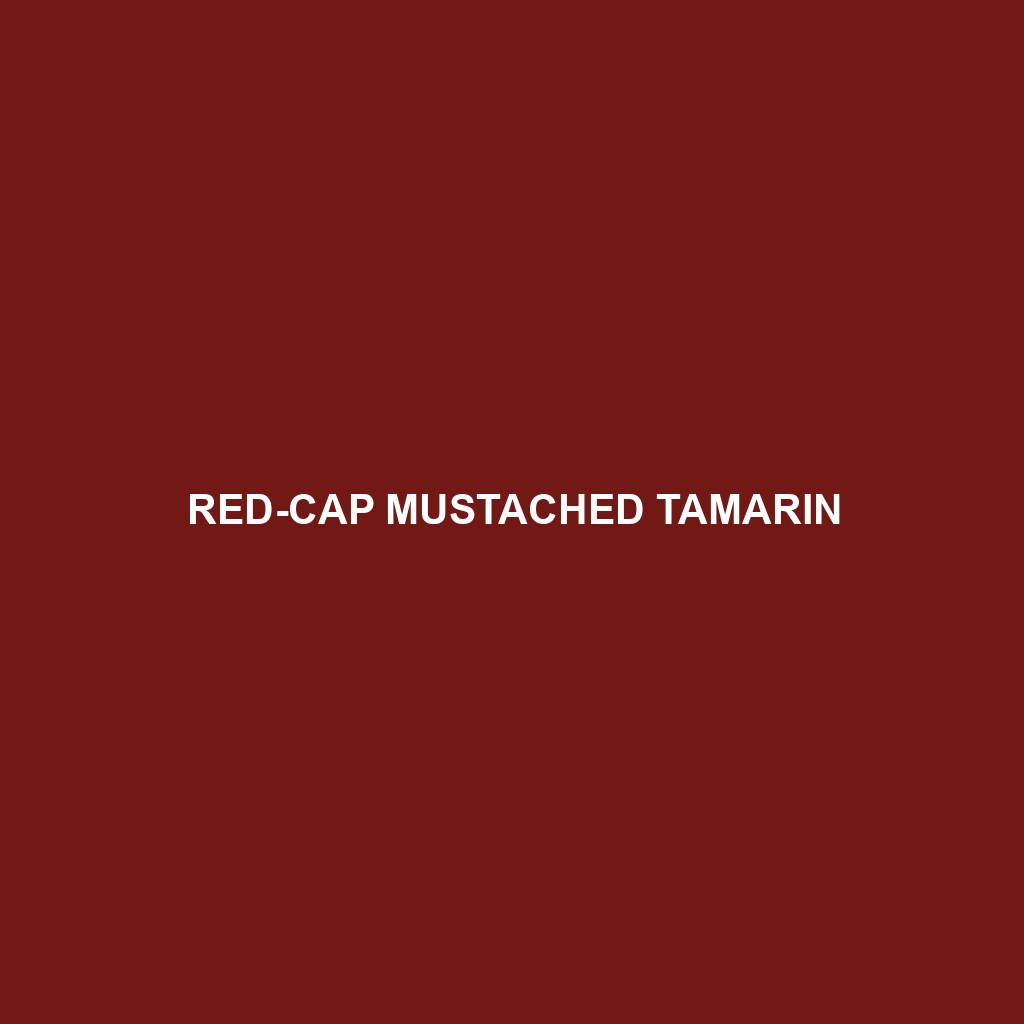Red-cap Mustached Tamarin
Common Name: Red-cap Mustached Tamarin
Scientific Name: Saguinus mystax
Habitat: The Red-cap Mustached Tamarin primarily inhabits the tropical forests of the Amazon Basin, specifically located in eastern Peru and northern Bolivia. This species thrives in subtropical and lower montane forests, where dense vegetation provides essential cover and access to food resources. Its preference for humid forest environments supports its survival and reproduction.
Physical Characteristics: The Red-cap Mustached Tamarin is characterized by its small size, typically weighing between 500 to 700 grams and measuring about 25 to 30 centimeters in length, excluding the tail. The most distinctive feature of this species is its vibrant red cap atop its head, which contrasts sharply with its fur, typically a mix of black and cream tones. Its elongated limbs, long tail, and flexible toes assist in its arboreal lifestyle, making it well-adapted for life in the treetops.
Behavior: Known for its social behavior, the Red-cap Mustached Tamarin lives in small groups, often consisting of familial units. They exhibit playful interactions and are highly vocal, communicating through a variety of sounds. Their agile movements and acrobatic skills enable them to navigate their forest habitat effectively, while their curious nature leads them to investigate their surroundings in search of food and mates.
Diet: The diet of the Red-cap Mustached Tamarin mainly comprises fruits, insects, nectar, and small vertebrates, demonstrating an omnivorous feeding habit. They play a vital role in seed dispersal within their ecological niche, enhancing plant diversity in their habitat. This species often forages in trees, utilizing their keen eyesight to identify ripe fruits and busy insect colonies.
Reproduction: Breeding typically occurs year-round, but peaks between March and September. Females usually give birth to one or two offspring after a gestation period of approximately 140 days. Notably, infants are often carried by other family members shortly after birth, promoting strong social bonds within the group and improving the survival rate of the young.
Conservation Status: The Red-cap Mustached Tamarin is currently listed as Vulnerable by the International Union for Conservation of Nature (IUCN). Deforestation and habitat fragmentation pose significant threats to their populations, making conservation efforts crucial to their survival.
Interesting Facts: One fascinating aspect of the Red-cap Mustached Tamarin is its ability to leap distances of up to 5 meters (16 feet) between branches, showcasing impressive agility. Additionally, they have been observed using tools, such as sticks, to extract insects from tree bark, indicating a level of problem-solving intelligence rarely seen in primates.
Role in Ecosystem: The Red-cap Mustached Tamarin plays a critical role in its ecosystem as both a seed disperser and a predator of insects. By consuming various fruits and seeds, they contribute to the propagation of plant species, while regulating insect populations through their dietary habits. Their presence in the forest ecosystem supports biodiversity, highlighting the interconnectedness of all species within their environment.
